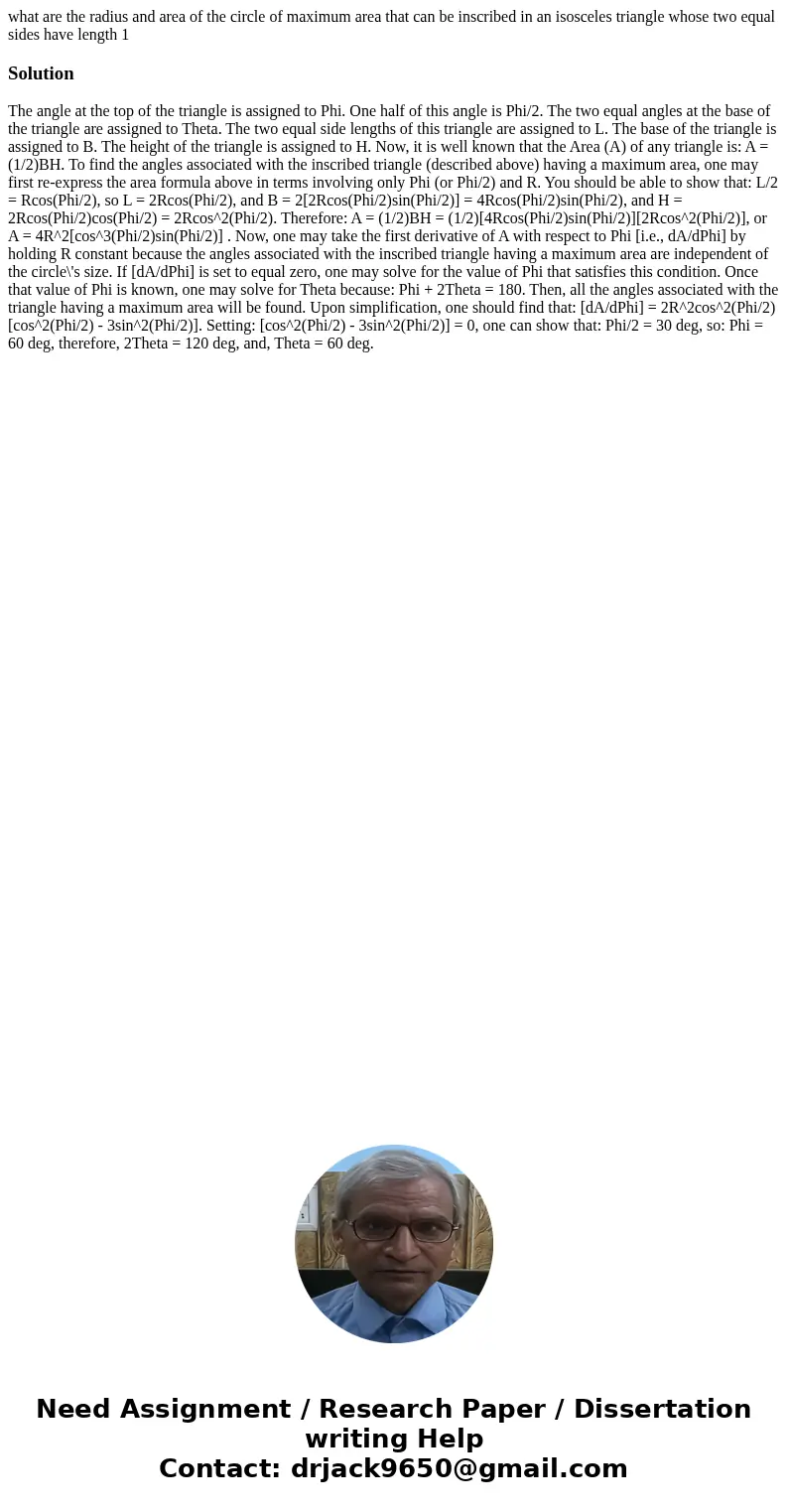what are the radius and area of the circle of maximum area t
what are the radius and area of the circle of maximum area that can be inscribed in an isosceles triangle whose two equal sides have length 1
Solution
The angle at the top of the triangle is assigned to Phi. One half of this angle is Phi/2. The two equal angles at the base of the triangle are assigned to Theta. The two equal side lengths of this triangle are assigned to L. The base of the triangle is assigned to B. The height of the triangle is assigned to H. Now, it is well known that the Area (A) of any triangle is: A = (1/2)BH. To find the angles associated with the inscribed triangle (described above) having a maximum area, one may first re-express the area formula above in terms involving only Phi (or Phi/2) and R. You should be able to show that: L/2 = Rcos(Phi/2), so L = 2Rcos(Phi/2), and B = 2[2Rcos(Phi/2)sin(Phi/2)] = 4Rcos(Phi/2)sin(Phi/2), and H = 2Rcos(Phi/2)cos(Phi/2) = 2Rcos^2(Phi/2). Therefore: A = (1/2)BH = (1/2)[4Rcos(Phi/2)sin(Phi/2)][2Rcos^2(Phi/2)], or A = 4R^2[cos^3(Phi/2)sin(Phi/2)] . Now, one may take the first derivative of A with respect to Phi [i.e., dA/dPhi] by holding R constant because the angles associated with the inscribed triangle having a maximum area are independent of the circle\'s size. If [dA/dPhi] is set to equal zero, one may solve for the value of Phi that satisfies this condition. Once that value of Phi is known, one may solve for Theta because: Phi + 2Theta = 180. Then, all the angles associated with the triangle having a maximum area will be found. Upon simplification, one should find that: [dA/dPhi] = 2R^2cos^2(Phi/2)[cos^2(Phi/2) - 3sin^2(Phi/2)]. Setting: [cos^2(Phi/2) - 3sin^2(Phi/2)] = 0, one can show that: Phi/2 = 30 deg, so: Phi = 60 deg, therefore, 2Theta = 120 deg, and, Theta = 60 deg.
 Homework Sourse
Homework Sourse